
- Details
- By Jeremy C. Holm
- Category: Luzon
- Hits: 2388
"It was hell on earth." -Unnamed 11th Airborne Division trooper
After the 11th Airborne Division’s historic landings on Luzon’s southern beaches at Nasugbu on January 31, 1945, the Angels began a mad dash inland to secure the heights of Tagaytay Ridge just south of Manila. It was a sprint which 8th Army’s LTG Robert L. Eichelberger called, “an exploit that (I consider) one of the most thrilling of the entire Pacific war.”
North of Manila in the Pampanga Plains, General Walter Krueger’s 175,000-man Sixth Army had become “bogged down”, and General Douglas MacArthur placed his hopes for a breakthrough on General Eichelberger’s Eighth Army to the south.
While originally a mere reconnaissance in force, the 11th Airborne, supported by various units, fought through enemy defenses in the Aga Pass then up to the heights of Tagaytay Ridge which the Angels in the 511th Parachute Infantry Regiment dropped onto on February 3, or X+4.
As the Angels spread out to secure road junctions on Highway 17 and patrol nearby towns, Generals Swing and Eichelberger set up their CPs atop the ridge at the Manila Hotel Annex. The two had a decision to make: continue securing the surrounding areas (their written orders) OR continue north into Manila (a verbal proposal given to Eichelberger by MacArthur himself).
There was no question: the Angels would push into the city.

- Details
- By Jeremy C. Holm
- Category: Luzon
- Hits: 3957
After the 511th Parachute Infantry Regiment dropped on Luzon’s Tagaytay Ridge just south of Manila, on February 4, 1945, COL Orin D. Haugen obtained permission from MG Joseph May Swing to lead the division’s push into the city.
“(Colonel Haugen) picked D Company to lead the regiment,” 1st Platoon’s 1LT Andrew Carrico recalled. “And Captain (Stephen) Cavanaugh put my platoon out in front of everybody. The tip of the spear.” Carrico then added with a smile, “My squad leaders all asked, ‘Why do we get all the dirty jobs?!’
CPT Stephen Cavanaugh traveled with 1st Platoon’s Leyte veterans as they were trucked towards Imus with the objective of finding a way across the Imus River. After reaching town’s main bridge, which had been blown, CPT Cavanaugh had 1st Platoon dismount and move west through town looking for a rumored secondary crossing, the last remaining structure across the river that could support the division’s two-and-a-half ton trucks. If it fell, so would the fast pace of the Division’s drive into the city.
Cavanaugh was apprised of an enemy camp in town around 0600 by 1LT Edwin B. Jeffrees of 2/511’s S-2. D Company’s Paratroopers carefully walked along the river until they reached a large walled courtyard containing several stone buildings. CPT Cavanaugh and 1LT Carrico quietly studied the courtyard and observed that it contained an enemy force preparing to depart the stone compound, possibly to cross the nearby dam/bridge before blowing it.
PFC James Wentik, part of the S-2 Jeep patrol which now accompanied D Company, noted, “(The Japanese) were entirely unaware of our presence and clearly did not expect us at that time since there seemed to be no effort toward security... This church yard was quite large and there could have been a couple of hundred Japanese.”
For the Division to successfuly enter Manila, the Japanese garrison would have to be destroyed.

- Details
- By Jeremy C. Holm
- Category: Blog
- Hits: 6120
On August 12, 1945, one of the most tragic events in the history of the 11th Airborne Division occurred on what some would consider "an insignificant airbase" at Lipa, Batangas on Luzon, Philippine Archipelago. Outside of native Filipinos, most people don't even know where Lipa is, but over 75 years ago (as of 2021) this event ripped at the heartstrings of an entire division of combat veterans who had already seen so much hell.
The 11th Airborne Division, known as "The Angels", had been fighting on Luzon since February and were heavily involved in the retaking of Manila and then southern Luzon. After nearly six months of intense fighting, the Angels were anticipating final operations as the war drew closer and closer to Tokyo's doorstep. The battle-worn division set up at Lipa to integrate replacements and prepare for a jump on either China or Japan itself. Those anticipations changed after COL Paul Tibbets and his Enola Gay crew dropped the first atomic bomb over Hiroshima on August 6, 1945.
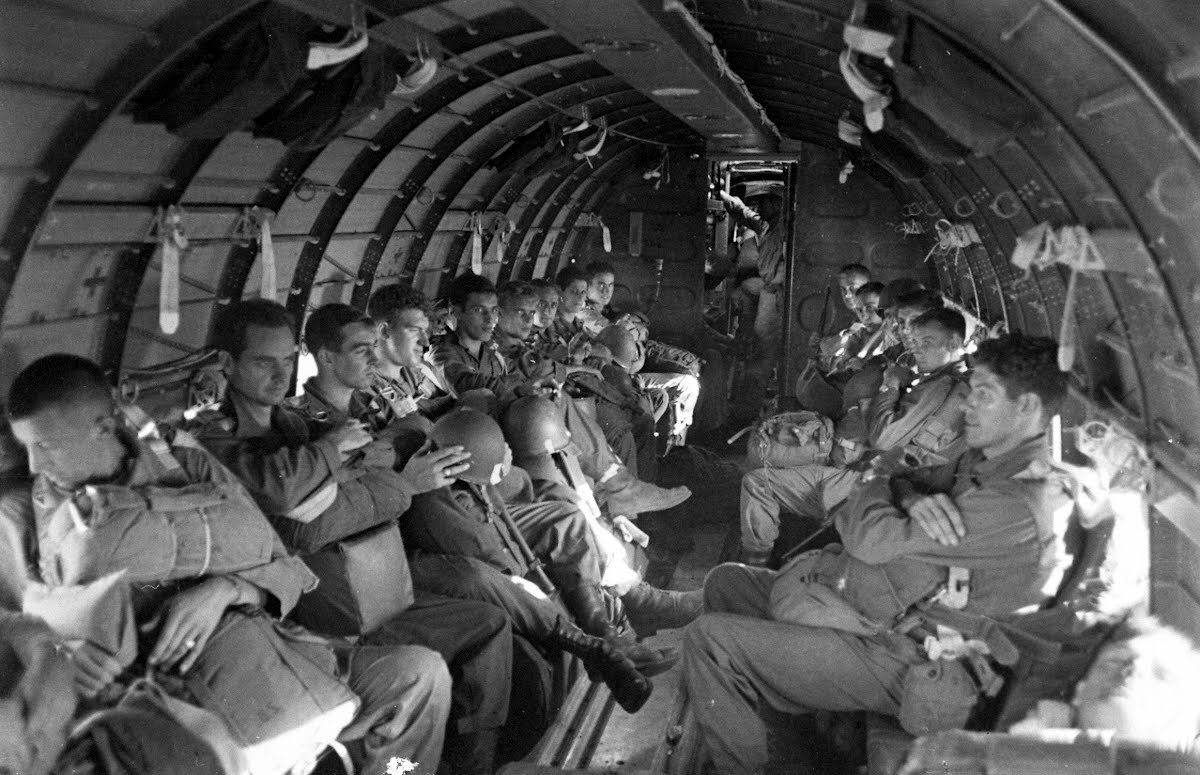
- Details
- By Jeremy C. Holm
- Category: Luzon
- Hits: 16242
For years now I have been reading and listening to articles and podcasts mistakenly claiming that Operation Varsity (part of Operation Plunder) was the last airborne operation of World War II. While Varsity was indeed an enormous campaign that involved over 16,000 paratroopers and thousands of aircraft, it was not THE last airborne operation of the war, though in can correctly be called the last one held on such a massive scale (Varsity was the largest single-day/single-location airborne deployment in history).
So, if that is the case, what WAS the last airborne operation of World War II? Answer: The 11th Airborne Division's Gypsy Task Force.

- Details
- By Jeremy C. Holm
- Category: Reunions and Beyond
- Hits: 21163
Much has been written about the power of faith during times of struggle, including and especially during times of war.
The saying that "There are no atheists in foxholes" holds almost universally true, though the soldiers, sailors, or airmen (or -women) may call their god by different names. It is the provenance of those called upon to fight for their country, or their deity, to find strength in faith (if they so desire), even if it is a faith they had previously forgotten or held with little regard. While in the words of General William Tecumseh Sherman "war is hell", God has the capacity to help the individual warfighter (and civilian) experience the help and strengthening hand of Heaven during his or her service.

- Details
- By Jeremy C. Holm
- Category: Reunions and Beyond
- Hits: 14275
Growing up my parents both labored to teach me the value of honoring the men and women who have or are serving in America's armed forces. My father is a veteran of the Vietnam War and my mother is a red-white-and-blue-blooded patriotic southerner whose roots go all the way back to Colonel James Barnett who fought in the 6th and 2nd Virginia Regiments which served under General George Washington during the famous Delaware River crossing at Trenton, NJ when Washington's forces rowed across the river to surprise England's Hessian mercenaries on December 26, 1776.
Colonel Barnett served his fledgling country until the war's end when he returned to Virginia to enjoy the freedoms that he and his comrades had so recently fought for. They were, and are, freedom which many in my family line have served and sacrificed to protect and defend, from the Revolutionary War to the War of 1812, then the Civil War, at the Alamo, and in World War I and II, Korea, Vietnam, Iraq, Afghanistan and beyond.

- Details
- By Jeremy C. Holm
- Category: Reunions and Beyond
- Hits: 45077
While the mighty 11th Airborne Division served with distinction in World War II and Korea, the division's "theme song" did not come along until the fall of 1950 after the Angels had returned to the United States following Occupation Duty in Japan. A contest was held to encourage the composition of songs and marches that would become anthems of the 11th Airborne Division and perhaps none of the final four entries is as well-known as the marching-ballad (which I'm sure was sung in bars and pubs by Angels since 1950) titled "Down From Heaven", an original song submitted by Colonel Byron Leslie Paige (SSN 376405509, USMA 1932) of Shelby, Michigan. The music that accompanied COL Paige's lyrics was arranged by Sergeant George Whissen.

- Details
- By Jeremy C. Holm
- Category: Leyte
- Hits: 24595
The Rat's Ass Charge is the story of one of those incredible engagements from World War II, one effected by a small, understrength and under-supported parachute companies, that equals anything that has been written about the incredible exploits of the 101st and 82nd Airborne Divisions in Europe.
That is not said to in any way to diminish what the Screaming Eagles and the All-Americans did "over there." Rather, it is only to point out that the 11th Airborne Division is equally deserving of attention, researching, illumination and praise. This is only a small piece of their story.
On Thanksgiving Day, 1944, after a breakfast of cold turkey and rain-soaked potatoes and fruit salad, the 511th Parachute Infantry Regiment led the 11th Airborne Division's push westward into the jungles and mountains of Leyte in the Pacific Theater. Over the next 30+ days, the young paratroopers of the 511th PIR would endure the harshest of conditions including hunger, thirst, cold, monsoon rains, Banzai assaults, tropical diseases, blood and death. Many companies went over five days (one up to ten) without resupply and rations and as D Company's 1LT Andrew Carrico later noted, resorted to eating "anything we could find: dogs, roots, potatoes. When you’re hungry you’ll eat anything. Hunger was a constant gnaw in our stomachs."
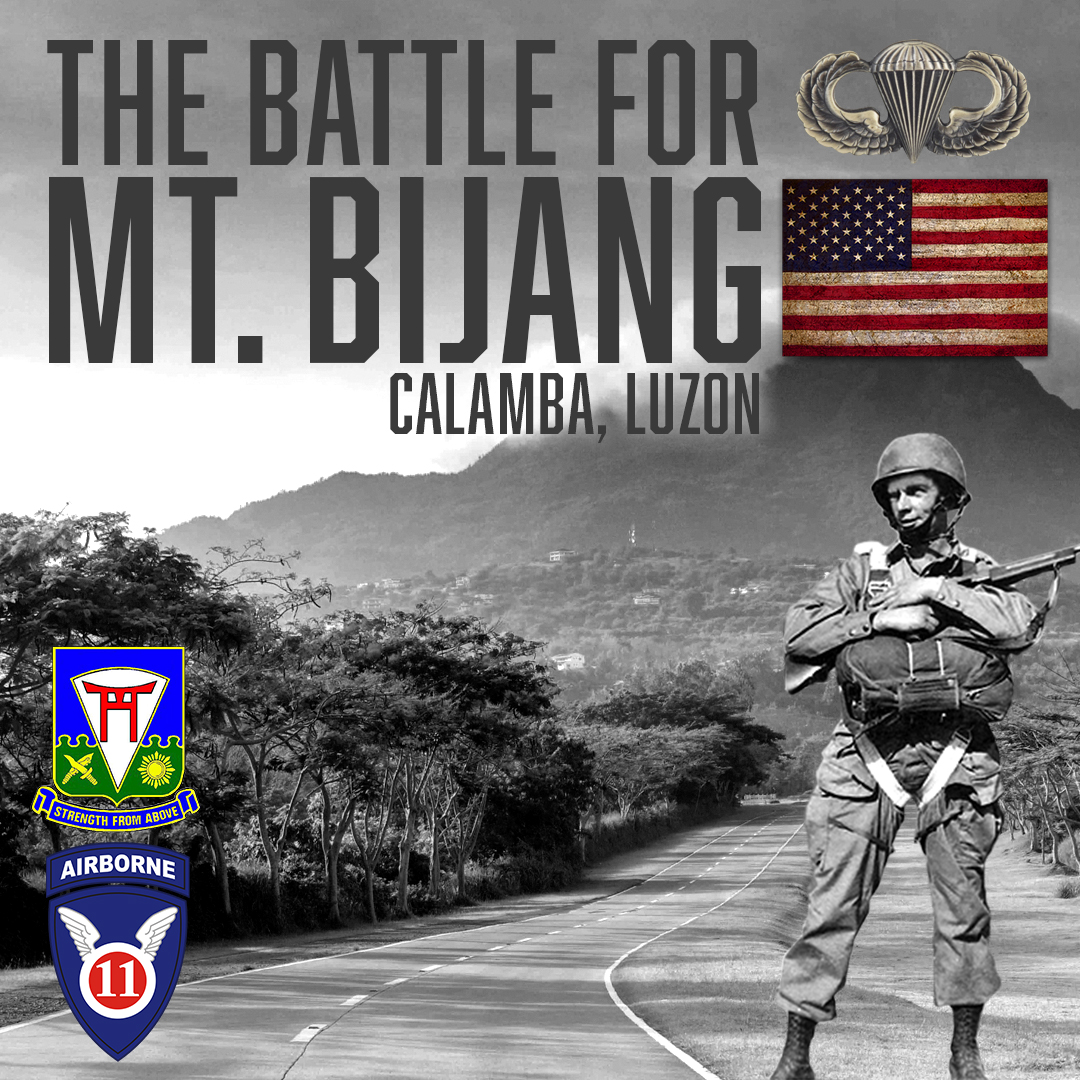
- Details
- By Jeremy C. Holm
- Category: Luzon
- Hits: 29802
The Battle for Luzon's Mount Bijang (also Bijiang), located about 40 miles south-east of Manila is one of those obscure combat engagements that the world has passed over simply because World War II was full of tens of thousands of such operations on land, the seas and in the air.
As any military historian (or even casual student) can tell you, these battles were often fought by men, frequently young men, who found deep wells of courage in the heat of battle in a mixture of adrenaline, duty, will, and an unrelenting desire to do their best for their buddies.
The Battle for Mt. Bijang is the story of one understrength parachute company in their fight to take and retain what their company commander called, "an insignificant piece of real estate" against an estimated 300 Japanese defenders. I have heard from the paratroopers who were there, including that company commander, and from my own grandfather, 1LT Andrew Carrico III who was serving as Company Executive Officer at the time and was wounded so badly that some in D Company thought he was killed. The Battle for Mt. Bijang was one of those "small-unit operations" that displays the effects of superb leadership, skilled NCOs, determined frontline fighters and one unit's unwillingness to let each other down.

- Details
- By Jeremy C. Holm
- Category: Reunions and Beyond
- Hits: 3227
THE WHITE HOUSE
WASHINGTON
August 12, 1988
It gives me great pleasure to send warm greetings to members of the 511th Parachute Infantry Association as you meet in Valley Forge for your 45th annual reunion.
Each of you has gone his separate way in the world, but--as this reunion proves once again -- your service and sacrifice together forged a bond of fellowship that time and distance cannot break. Together you confronted danger and endured terrible hardships, and together you rose to the challenge; you never faltered. Many of your brothers gave their last full measure of devotion so that others might live in freedom. Your accomplishments in defense of liberty will never be forgotten, and America's debt to you will remain far more than we can ever repay.
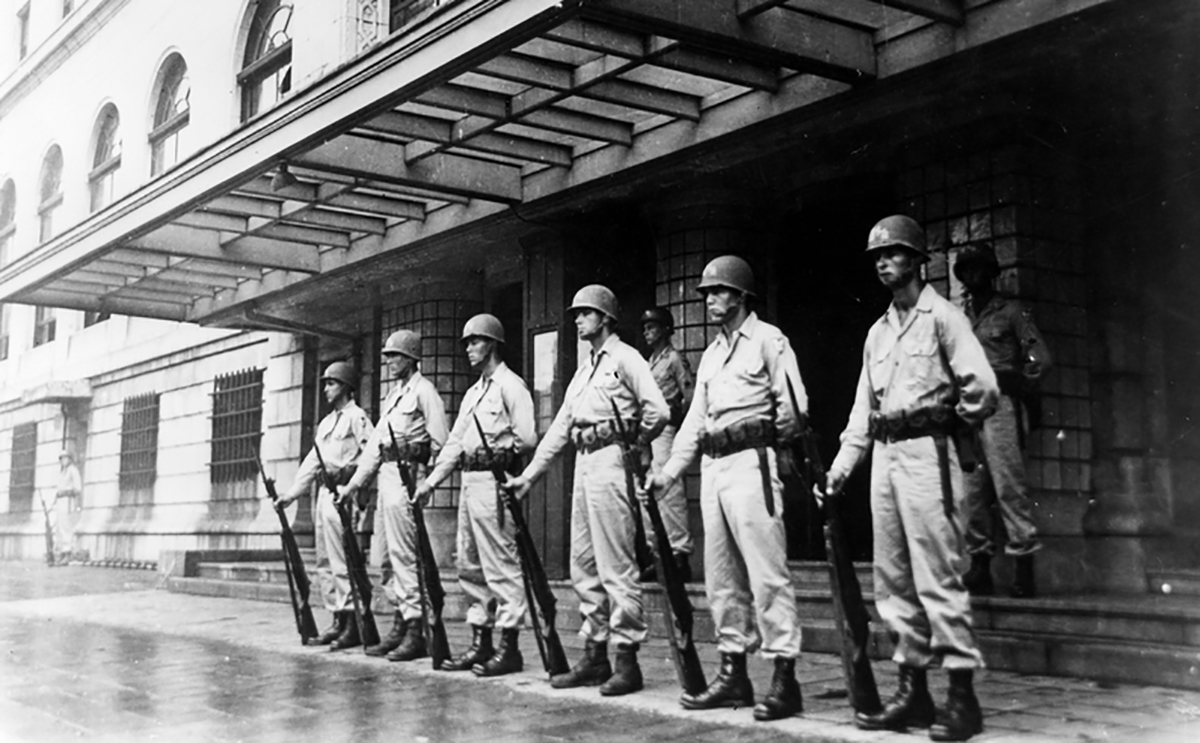
- Details
- By Jeremy C. Holm
- Category: Japan
- Hits: 14258
While the 11th Airborne Division was still outside Lipa on Luzon in early August of 1945, GEN MacArthur asked Major General Joseph Swing to form part of his Honor Guard for Japan from the 11th Airborne's troopers. General Swing passed word to his regimental commanders in the 511th and 188 PIRs and the 187th GIR to select their best troopers for the duty, with the stipulation that each trooper must be over 5’11”.
SSGT Wilbur Wilcox, a friend of my grandfather’s from D-511, said:
“The qualifications for the Honor Guard were height and combat experience. As the tallest Staff Sergeant picked, and because I had been through Leyte and Luzon, I was placed as the first man in the first rank. As the other men were picked to fill out the squad they were placed according to how tall they were.” Each regiment supplied one platoon of five squads led by two officers with sixty-six enlisted men that would guard MacArthur at the Atsugi airfield, during the surrender signings, at his Yokohama HQ (the five-story New Grand Hotel), his residence at the Sun Oil Company compound and at his home at the U.S. Embassy.

- Details
- By Jeremy C. Holm
- Category: New Guinea
- Hits: 8603
I've received several inquiries lately about what Colonel Orin D. "Hard Rock" Haugen's 511th Parachute Infantry Regiment (and the 11th Airborne Division as a whole) did while they were stationed at Dobodura, New Guinea between May and November of 1944 and thought I would paint a portion of that particular picture here.
When the regiment arrived at Oro Bay on May 28, 1944 they got their first real look at the lush green mountains of the Pacific's islands with a relatively short stop-over in Milne Bay (either at Aihoma or Waga Waga) where the Angels' transport, the much-hated SS Sea Pike, off-loaded some cargo and took on fresh water and fuel. During the activities, the dock workers regaled the fresh paratroopers with stories of the battles for New Guinea which had been raging since January of 1942, over two years earlier. Some of the workers even told the Angels that they daily patrolled the jungles around the docks just to shoot enemy stragglers.
Col. Haugen's cocky, yet inexperienced, boys ate it up, of course.

- Details
- By Jeremy C. Holm
- Category: Japan
- Hits: 15934
After my grandfather 1LT Andrew Carrico of Company D passed away in October of 2016, my beloved grandmother Jane gave me some of his books on military history and leadership. They are a special part of my collection, but the funny thing is....Grandpa really disliked some of them. He was painfully aware of just how few of the tens of thousands of books published on World War II even mention the 11th Airborne Division, let alone his proud 511th Parachute Infantry Regiment (you can likely count them on two hands)
When Grandma shared Grandpa's books with me, she pointed to one with a smile and said, "Andy hated that one. It doesn't even mention the 11th." And as a historian for the 511th PIR, and the 11th Airborne as a whole, I have to agree with Andy. While researching, writing and publishing WHEN ANGELS FALL: FROM TOCCOA TO TOKYO, THE 511TH PARACHUTE INFANTRY IN WORLD WAR II, I found myself disappointed by the lack of media coverage regarding the Angels' history (I admit to some bias there).
One of the most important aspects of the Angels' history that is hardly mentioned anywhere is their incredible landings at Atsugi, Japan between August 28-30, 1945. Apart from further cementing the reality of the war's end, this made the 511th Parachute Infantry Regiment the first fully-formed foreign regiment to land on Japan in the country's long history, not to mention the first Allied unit into Japan at the war's end.

- Details
- By Jeremy C. Holm
- Category: Luzon
- Hits: 11340
Seventy-five years ago on February 23, 1945 the 511th Parachute Infantry Regiment and the 11th Airborne Division ("The Angels") conducted their famous raid on the Los Baños internment camp on Luzon, Philippines. It is, perhaps, the regiment's most well-known operation (although their history is full of incredible campaigns). At Los Baños, the Angels were willing to risk heavy losses to rescue the 2,100+ men, women and children who had been prisoners of the Imperial Japanese forces since early 1942, so roughly three years. After the 11th Airborne landed on Luzon in late January and early February of 1945, Major General Joseph May Swing was tasked with effecting a rescue of the civilians held at the camp. The problem was that in early- and mid-February General Swing's Angels were heavily engaged in the fight for Manila and therefore he could not commit a force of sufficient size to conduct the raid for now. The internees would have to wait a few weeks more.
Despite horrendous conditions in the camp under the Imperial Japanese guards, the internees at Los Baños were in good hands, some would even say miracle-effecting hands. No, I am not referring to the camp's abundance of clergy who, after arriving in July of 1944, labored to keep up the spirits (and faith) of the internees (although some refused to help with the sick in the camp).
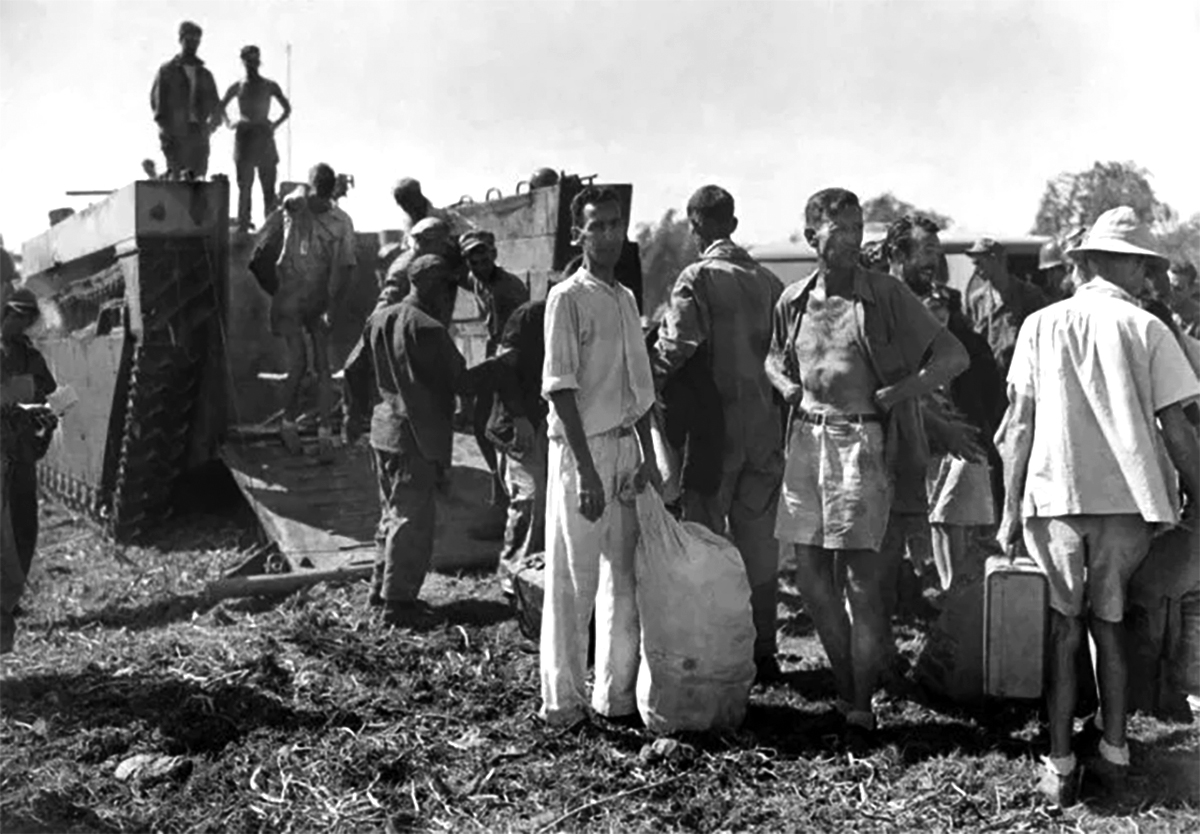
- Details
- By Jeremy C. Holm
- Category: Luzon
- Hits: 7321
"This operation will remain in military history as a classic example of the use of airborne troops to achieve tactical surprise." -Lieutenant-General William P. Yarborough, 1989.
Note: This timeline is an attempt to cover the major aspects of this historic operation by date/time. It will not cover every facet or key player of the raid in detail for to do so would require (and has) an entire book. If you would like to read the full story of this mission, you may do so in my book, “When Angels Fall: From Toccoa to Tokyo, the 511th Parachute Infantry Regiment in World War II”
I would like to give a special thank-you to Col. Edward H. Lahti who was CO of the 511th Parachute Infantry Regiment at the time of the raid and whose papers I am in possession of.

- Details
- By Jeremy C. Holm
- Category: Luzon
- Hits: 7304
The Santo Tomas Executive Committee originally posted this message on May 8, 1945 indicating that a new internment camp was being opened on the shores of Laguna de Bay on Luzon. The site was to be the Los Baños Agricultural College.
This afternoon the Commandant of the Camp issued the following statement to the Executive Committee:
I am authorized by the Director-General of the Japanese Military Administration in the Philippines to make a statement regarding the change of location of enemy civilian's internment camp.
As all of you are well aware, released enemy nationals in the city of Manila are more than 2,000. Most of them, being unemployed, are in extreme difficulties in their living, and the number of applicants for internment is daily increasing. It is, however, to be pointed out that the present accommodations available in the Santo Tomas Internment Camp is not sufficient to have all of them interned there, and particularly so from sanitary point of view.

- Details
- By Jeremy C. Holm
- Category: Luzon
- Hits: 13603
Documents list and videos below photo gallery - View Complete Operation Timeline Here
A. Camp Related Documents
1 - Notice of Transfers from Santo Tomas to Los Baños - May 8, 1945
2 - Camp Roster from December 25, 1944
B. Letters:
1 - 5x Letters from Martin L. Squires of Div Recon to LTG Edward M. Flanagan 1984-1986
2 - Letter from Sgt. Martin L. Squires (Div Recon) to Maj. Henry Burgess 1984
3 - Letter from Cpl. Terry Santos to Sgt. Martin L. Squires (both Div Recon) - 1984
*Note: Martin Squires later married an internee he helped rescue, Margaret Whitaker

- Details
- By Jeremy C. Holm
- Category: Stateside / Training
- Hits: 21548
While there is an unfortunate scarcity of research out there in regards to the 511th Parachute Infantry Regiment, and the 11th Airborne Division to which the 511th PIR belonged, there has been even less written or documented regarding the men who fought as Angels in World War II. While the 511th PIR served under two leaders during the war whom were greatly revered, the man who laid the foundation for the regiment's historic achievements was given an appropriate nickname for such accomplishments: Hard Rock.
Camp Mackall
Four days after Colonel Orin D. Haugen's 511th Parachute Infantry Regiment closed on North Carolina's Camp Mackall in March of 1943, they became the first fully-formed unit of Major-General Swing, Joseph May Swing's new 11th Airborne Division, the first unit to headquartered at the new camp.

- Details
- By Jeremy C. Holm
- Category: General History
- Hits: 17869
With the anniversary of General Douglas MacArthur's death (January 26, 1880 – April, 5, 1964) approaching, I thought I would share a fascinating, yet abbreviated history of Mac and my grandfather's 11th Airborne Division which was a favorite "secret weapon" for The Napoleon of Luzon in World War II (a full review of MacArthur's relationship with The Angels can be found in my book, "When Angels Fall: From Toccoa to Tokyo, The 511th Parachute Infantry Regiment in World War II". The Angels were associated with or touched by several of the war's most historic moments, including some that would thrill military historians and enthusiasts around the world.
As the 11th Airborne Division sailed for Dobodura, New Guinea in May of 1944, their commanding general Major General Joseph May Swing was was headed for Australia to meet with General MacArthur. Swing was widely recognized as one of America's most qualified airborne commanders having been artillery commander for the 82nd Infantry Division when it was converted to the 82nd Airborne Division where Swing quickly became a disciple of airborne tactics.
- Details
- By Jeremy C. Holm
- Category: Luzon
- Hits: 49280
"This operation will remain in military history as a classic example of the use of airborne troops to achieve tactical surprise." -Lieutenant-General William P. Yarborough, 1989.
75 years ago two incredible events occurred thousands of miles across the vast Pacific Ocean. The first took place at around noon six United States Marines raised a second, larger American flag atop Mount Suribachi, a moment that was captured in an iconic photograph by Associated Press (AP) photographer Joe Rosenthal. When AP Photograph Editor John Bodkin received the photo on Guam he exclaimed "Here's one for all time!" It became one of the most recognized images from the war, indeed in American history.
The prominence of Rosenthal's photo in the press overshadowed, then and now, the accomplishment of another group of fighting men who risked it all to to rescue over 2,100 men, women and children from behind enemy lines over 1,500 miles southwest of Iwo Jima. Theirs was the second incredible event that took place on February 23, 1945 and it is as inspiring as it is impressive.
The 11th Airborne Division's raid on the Los Baños Internment Camp.

- Details
- By Jeremy C. Holm
- Category: Stateside / Training
- Hits: 10178
This is Part 1 of our series on the legendary Colonel Orin D. "Hard Rock" Haugen #18254.
While there is an unfortunate scarcity of research out there in regards to the 511th Parachute Infantry Regiment, and the 11th Airborne Division to which the 511th PIR belonged, there has been even less written or documented regarding the men who fought as Angels in World War II. While the 511th PIR served under two leaders during the war whom were greatly revered, the man who laid the foundation for the regiment's historic achievements was given an appropriate nickname for such accomplishments: Hard Rock.

- Details
- By Jeremy C. Holm
- Category: Stateside / Training
- Hits: 13601
With America officially at war, in 1942 the country's military leadership began to accelerate the training of their still very new parachute troops. And Camp Toccoa, Georgia, now made famous by the HBO miniseries "Band of Brothers", played an important role in that effort.
While Toccoa was, by comparison, a “little camp outside a little town far off the beaten path", over 18,000 young men and officers would train there and go on to fight overseas in northern AND southern France, in Holland, and at the Battle of the Bulge then "liberate" Hitler's Kehlsteinhaus, or Eagle's Nest, and then march down Pennsylvania Avenue after the war was over "over there".
At least, that is the limit to what most airborne enthusiasts and even some historians believe to be the case. Far too often the story of the 511th Parachute Infantry Regiment is overlooked or forgotten although it was the third of the four regiments (the 506th, 501st, 511th and 517th in that order) that formed at Camp Toccoa. Like all original Toccoa-men, the 511th cut its teeth (and "sweat blood") on the area's famous Currahee Mountain before, according to its future commander Colonel Edward H. Lahti, going on to create a "record unmatched in history".

- Details
- By Jeremy C. Holm
- Category: Leyte
- Hits: 12274
December 25, 1944
It was “a gray morning carved out of gray clay and shadowed by fog.”
So pennedT/4 Rodman "Rod" Serling of HQ1-511, a demolitions man who joined the several-miles-long column of bedraggled, trudging paratroopers coming down from Leyte’s hills. Rod and his comrades of the 511th Parachute Infantry Regiment had just completed 33 days of combat in those jungle-covered heights and mountains and as one of those troopers later declared, “After Leyte, Hell was a vacation.”

- Details
- By Jeremy C. Holm
- Category: Blog
- Hits: 900
MacArthur's secret weapon and heroes of the Los Baños Raid, the 11th Airborne Division's 511th Parachute Infantry Division fought with distinction during the vicious Leyte and Luzon campaigns where many 511th units received Presidential Unit citations. The regiment, led by Colonels Orin "Hard Rock" Haugen and Edward "Slugger" Lahti, helped save the United States Airborne during the Knollwood Maneuvers, eliminate Japanese forces on Leyte, liberate Manila and rescue 2,142 internees at the Los Baños prison camp in 1945, were the first full unit into Japan at the end of World War II, formed General MacArthur's Honor Guard and protected the Allied dignitaries during the surrender ceremony on the USS Missouri.
And their average age was just 21.
Despite their age, US Sixth Army's General Walter Krueger watched the Angels in action and said they were, "the God-damned fightingest outfit I have ever seen!"
Throughout this website you will learn about that "fightingest outfit", one of America's most elite combat forces and one of the only parachute units to fight in the Pacific Theater. Their loyalty to each other, ability to endure combat's harsh realities and the emotional struggles they faced to help win the war has earned the 511th PIR the nickname, "The Band of Brothers of the Pacific."
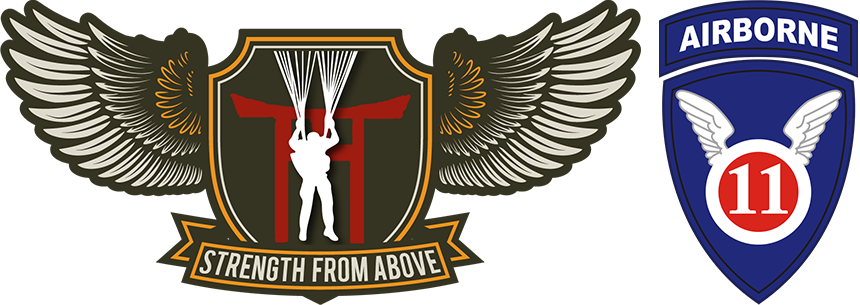

 "We Were The Best There Ever Was."
"We Were The Best There Ever Was." 


